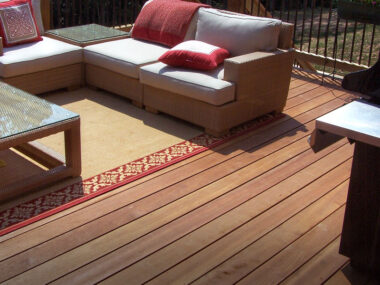Flat roofing is becoming an increasingly popular option for homes and businesses. While it does have some advantages, there are also a few drawbacks to consider before making a decision. Here is a look at the pros and cons of flat roofing so you can make an informed choice.
Pros of Flat Roofing
-
Low-Maintenance
If you want a roof replacement that is low-maintenance, flat roofs are the way to go. This style of roof has a watertight outer membrane that prevents leakage and damage from rain and snow. The waterproofing also protects against wind and fire damage. With other types of roofs, dirt, leaves, moss and other debris can collect on the surface over time requiring homeowner maintenance to keep it clean. A flat roof does not need regular cleaning so homeowners don’t have to deal with this added chore.
-
Durable
While metal roofs will last for many years, they can corrode if left untreated or be punctured by hail or fallen tree limbs due to strong winds. Flat roofs are made out of tough membranes so they are durable and can withstand these types of problems.
-
Attractive
Flat roofs have a clean look that is more appealing than most other roofing types. They also come in neutral tones so they blend in well with the color scheme of the home, which will give it a more cohesive appearance. On commercial buildings, flat roofs keep business owners from having to pay for additional climate control since water damage creates stains on the ceiling that would have to be repainted regularly if it were sloped or hipped. You won’t have this issue with flat roofs.
-
Customizable
You can choose a type of flat roofing that best meets your needs. For example, some types come in roll form or panels for easy installation while others are pre-cast to speed up the process. Having options makes this style of roof very versatile and customizable.
-
Budget-Friendly
Low-maintenance flat roofing is generally more affordable than other types of roofing materials. This type of roofing can also be built from recycled products which further reduces cost for homeowners and businesses.
-
Modular
Flat roofs are modular which means you can build them out to any size and then go back and add more layers as needed. This is a great option if you need a temporary solution for your roof or a permanent one that starts small and grows with the structure over time.
-
Green
The same technology that allows flat roofs to last longer than other types of roofs make them sustainable options for the environment. Using recycled materials and creating modular designs means less waste in landfills while LEED guidelines will help you get tax breaks if your home or business is certified by the U.S. Green Building Council.
-
Health
In very hot climates, flat roofs are a good option because the lack of a slope means there is less room for sunlight to heat up the structure. This can reduce energy costs and keep your air conditioning running smoothly. In colder climates, it is easy to insulate flat roofs so they have more consistent temperatures throughout the year which will keep you comfortable in all seasons.
-
Safety
Flat roofs are generally safer than other types of roofs because there is no risk of slipping. The smooth surface also keeps anyone from gaining traction to climb up the side of your building. Finally, flat roofs provide an easy way for first responders to access your roof should you need assistance for any reason.
Cons of Flat Roofing
-
Drainage
Issues Unless you don’t mind getting wet when it rains, flat roofing may not be suited for your property due to its lack of adequate drainage. This type of roof is more likely to pool or hold in water if it is not installed properly or may be hampered by poor weather conditions that interfere with proper runoff.
-
Repair Costs
Depending on the extent of damage, repairs for flat roofs are often more expensive than other types since they can be more difficult to get to. Since the membrane is typically impenetrable, technicians have to gain entry into the structure through interior rooms or lower sections of the property, which can lead to additional problems and expenses for homeowners.
-
Pests
Pests, such as rodents and insects, often take advantage of flat roofs because they provide easy access to the structure. This can lead to damage over time that will need to be repaired which increases costs. Pests are also a health hazard for homeowners who may have to deal with bug infestations during certain seasons.
-
Legal Liability
Roofing accidents can lead to legal liability issues since a flat roof offers no room for secondary safety measures. When installing a roof, it’s necessary to follow building codes and best practices in order to create a structure that will support occupants without causing bodily harm or damage during heavy weather. Flat roofs don’t have this fallback protection which means you’re taking a risk if you choose this type of roof.
-
Noise Pollution
Flat roofs often lack insulation so they can transmit noise pollution from outside into the interior of your home or business more easily than other types of roofs where sound is less likely to be heard as much as it would on a flat roof.
-
Link to Building Shape
When flat roofs are designed correctly, they can work great for any structure whether it’s an A-frame, gable, hipped, dome, pyramid or even pagoda. However, some styles of architecture do not look good with flat roofs because the design is either too bulky and boxy or has a low slope that doesn’t give you enough headroom beneath your roof. In this case it may be better to go with another option that gives you more flexibility in terms of what your roof looks like from the outside.
-
Energy Efficiency
If you live in a hot climate, the lack of insulation on flat roofs can lead to increased energy costs over time because your air conditioning will have to work harder to cool down an uninsulated structure. This is especially true if you don’t take the time to install insulation or devise other strategies for preventing heat transfer into your roofing system.




